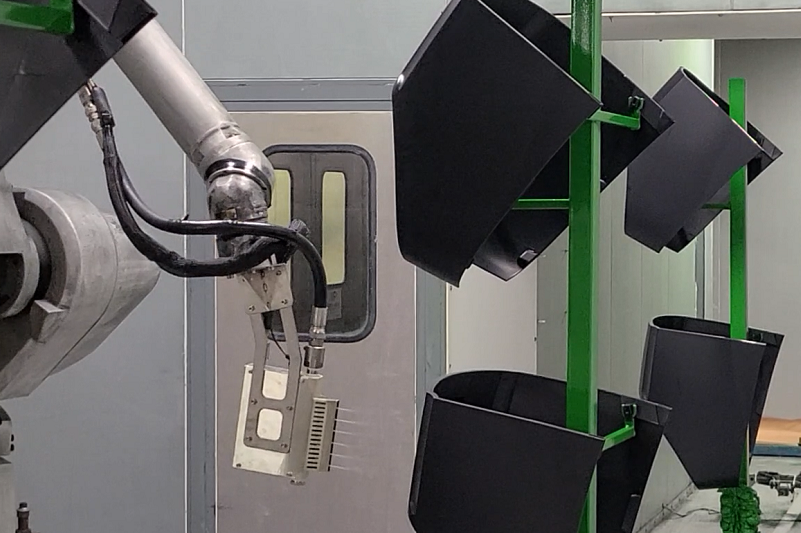Waterless Cleaning & Surface Pretreatment for Parts Prior to Painting, Coating, & Varnishing
Surface Preparation Features:
- Quick removal of particulate matter, dust, and debris
- Automated to provide a touchless cleaning solution
- Retrofits to existing equipment, robotics, etc.
- No post drying step needed
- Optional additive injection
Cleaning and surface preparation prior to painting, coating, varnishing, bonding, and welding is of critical importance in a wide range of industries. Manufacturers come across unwanted contamination on the surface of the part that must be removed prior to painting and coating. Common surface preparation defects include dust particles, mold release agents, thin films, and other residues. Traditional surface pre-treatment processes, such as water-based cleaning, hand wiping, and air blow off systems, have proven to be ineffective and expensive.
CO2 spray cleaning systems provide cost-effective, no-touch cleaning that can be dropped into existing production lines with a fraction of the footprint of water-based cleaning. Cool Clean’s waterless CO2 cleaning solutions requires no post drying, allowing parts to move directly to a painting or coating step.
CO2 cleaning is solvent-free and non-abrasive to the surface, making it a safe alternative for workers. Manual hand wiping with isopropyl alcohol dipped rags yields inconsistent cleaning results, while CO2 cleaning may be implemented as an automated tool into the production line, significantly improving efficiency.
The primary cleaning agent for CO2 cleaning is solid CO2 particles, or dry ice, sometimes referred to as “snow”, which sublimes upon contact with the surface, leaving behind no cleaning agent residues to manage. Air blow systems do not have the same cleaning force as CO2 cleaning and are therefore unable to remove heavier dusts and contaminants from the surface. Any contamination left behind on the surface greatly affects the adhesion of paints and coatings. CO2 cleaning removes all contamination from the surface ensuring proper adhesion and less rejected parts.
Additional cleaning may be achieved by combining additive injection to modify the chemistry of the cleaning spray. CO2 cleaning used in conjunction with atmospheric plasma and ionized air de-static systems may provide additional surface preparation capability.

